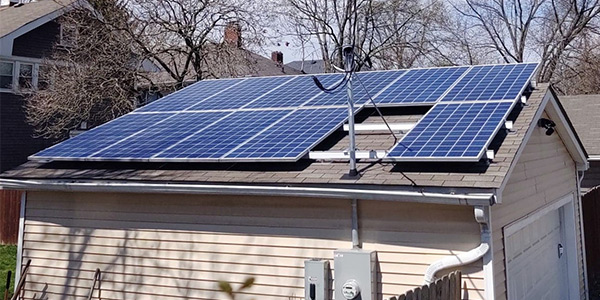MISO again explained its lack of insight into the system’s distributed energy resource numbers while stakeholders asked for simpler interconnection studies during the inaugural meeting of the Distributed Energy Resources Task Force (DERTF).
The task force will meet monthly, ultimately furnishing recommendations to the Market Subcommittee on how to best approach FERC’s Order 2222, which allows DER aggregators to compete in organized wholesale electric markets.
Minnesota Public Utilities Commission Planning Director Tricia DeBleeckere and Xcel Energy’s Diane Watkins were selected as the group’s chair and vice-chair, respectively.
Timothy Caister, MISO’s DER program lead, said during the meeting that staff is considering asking FERC for an extension of Order 2222’s July 19 compliance deadline. He said MISO hasn’t settled on how much more time to request. (See Members Counsel MISO on Order 2222 Prep.)
Laura Rauch, the RTO’s director of settlements, said the goal is to “allow near-term DER integration with minimal system impacts.” She said staff will examine existing ways DER aggregators can participate in the markets through its predefined dispatchable intermittent resource, demand-response resource and energy storage resource categories. MISO will then perform analyses to pinpoint long-term system needs to facilitate DER participation.
Rauch asked stakeholders for written opinions on the action plan through Jan. 18.
“We’re still struggling at MISO, as I expect others are, to quantify DER growth in the MISO region. That’s something we’re going to focus on,” DER Program Director Kristin Swenson said. “Projecting how much DER is going to be in the footprint is a perennial question, [and] we’re working on it. … MISO has no real visibility into the distribution system.”
Swenson noted that the grid operator relies on load-modifying resource registrations, its member utilities’ integrated resource plans and the Organization of MISO State’s annual DER survey estimates for an initial understanding of the resources’ penetration. However, she said the data remains too spotty and inconsistent to accurately model and appropriately plan “as the generation fleet goes onto rooftops.” She also said DER visibility is key to MISO’s reliable operations.
The RTO could employ an affected system study to gauge how distribution interconnections will impact the transmission system, Swenson said. The mention of “affected system studies” struck a nerve with some stakeholders.
“As soon as you use the word ‘affected system study,’ you can expect people are about to faint,” Madison Gas and Electric’s Megan Wisersky said, alluding to MISO’s and MISO West Risks Becoming ‘Dead Zone,’ Stakeholders Warn.)
Wisersky urged that any MISO-designed DER impact studies “not be unduly restrictive, bureaucratic and always behind schedule.”
MISO’s managing assistant general counsel, Michael Kessler, said Order 2222 dictates coordination among distribution utilities, relevant electric retail regulatory authorities and grid operators to assess grid impacts.
“The commission has said those studies should not become barriers or impediments,” he said.





